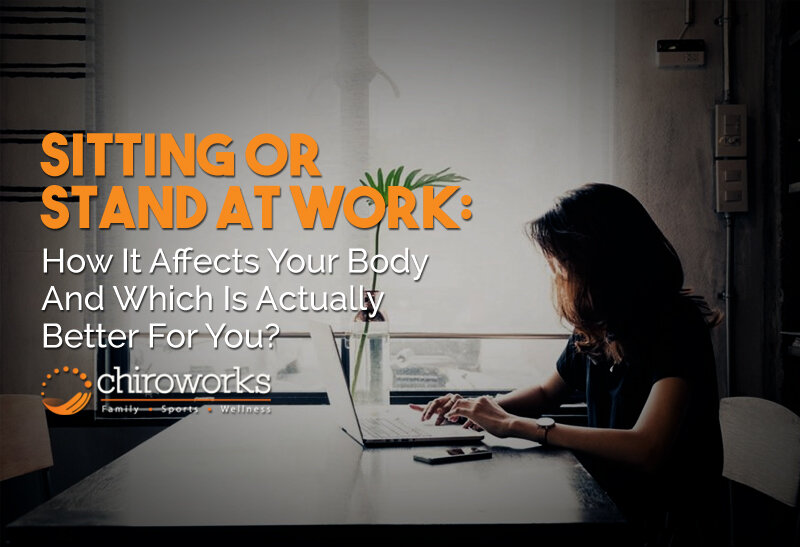Being propped in a chair all day have been proven to be detrimental to anyone’s health. Which is why with the increasing number of desk jobs around the globe, sitting have been branded as the new smoking due to the rise of health issues related to it. However, does this mean ditching the chair and opting for standing desks would be better? Or does this mean those people with jobs that require them to stand for long hours are healthier? Well, learn more and understand how exactly sitting and standing affects our body and find out the answer here!
Sitting
Sitting is something we can’t entirely forgo in our daily lives considering that we do a lot of things while sitting down. Eating, driving, online shopping, watching TV/movies, relaxing, and even working all involves sitting. However, if we don’t find ways to break this cycle; it could be lethal for us. A study published in Annals of Internal Medicine show that we spend 9.3 hours a day propped in a chair, which is even more time than sleeping. Long hours of inactivity like that increases risk of death by 40% due to a lot of health problems that it can bring in the long run.
Those with desk jobs develop cardiovascular disease twice more than those with moving or standing jobs.
Sitting for hours on end have also been linked to obesity due to not exerting energy and sometimes combined with unhealthy eating choices.
Calorie burning drops to 1 per minute.
Good cholesterol decreases by 20% after 2 hours of sitting.
Risk of diabetes rises as the insulin effectiveness drops 24% after a day of inactivity.
If you have a desk job, spend more time standing or moving outside work. Interrupt sitting at least every hour, stretch, walk or march in your place, or anything that will make you get up and move.
Standing
Now, just because prolonged sitting is proven to be generally unhealthy doesn’t mean switching to standing for hours is better. Actually, it can be just as bad. Standing to work has long known to be problematic, it is more tiring, and for men with ischemic heart disease it increases the progression of carotid atherosclerosis because of the additional load on the circulatory system. Prolonged standing at work also increases the risks of varicose veins and accounts for more than one fifth of all cases of working age. So standing all day is unhealthy. The performance of many fine motor skills also is less good when people stand rather than sit. Ergonomists have long recognized that standing to work is more tiring than sitting to work. Standing requires 20% more energy than sitting. Standing puts greater strain on the circulatory system and on the legs and feet. Consequently, in industry we provide employees with ergonomic anti-fatigue to stand on, with anti-fatigue footwear, and with chairs to allow them to sit down during rest breaks.
Sit-Stand Workstation
This is why companies should really start investing in height adjustable desks for their workers. Utilizing height adjustable desks in your workplace is a good way to alternate sitting down and standing up throughout the day and avoid back pain and stiffness. Being allowed to move more by alternating sitting and standing not only lessens chances of back pain but also improves a worker’s mood. We all know that once a person starts feeling stressed out or starts getting into a bad mood, a tasks starts feeling more difficult or they get mental blocked that they can’t figure out how to do something at all. But the simple act of getting up from the desk and moving your body refreshes the brain more than staring at the computer for hours.
The Verdict
So the question is, what position is best for you? Well, the answer to that is neither because both can be bad for you if you’re in it for an extended period of time. The best thing would be to maintain motion as much as you can while working. To go about this, you can sit to do your computer work, better if you’re using a height adjustable desk and an ergonomic chair. But make sure to stand up every hour for at least 8 minutes and do something where you’ll have to really move for 2 minutes. Here are ways to inject more movement while you’re at the office:
Opt For A Standing Meeting
This doesn’t just prevent boredom but it also promotes increase in focus during meetings since people tend to be more alert when standing up.
When Phone Rings, Get Up
You almost do your entire work sitting down, take a phone call as an opportunity to stand up and take some pressure off your lumbar disc.
Locate Printers/Photocopiers Away From Desks
This will encourage people to stretch their legs and active their lower body muscles instead of stretching their arm to get the document.
Eat Lunch Away From Your Desk
Go to the cafeteria, or eat your home-made lunch at the nearby park. That’s a change of scenery, a little exercise (walking), and breathing fresh air all rolled into one.
Move Through Mental Block
If you’re stuck on a problem, idea, or a project, get up from your desk, walk around or do some physical task. Moving your body refreshes the brain more than staring at the computer for hours.


